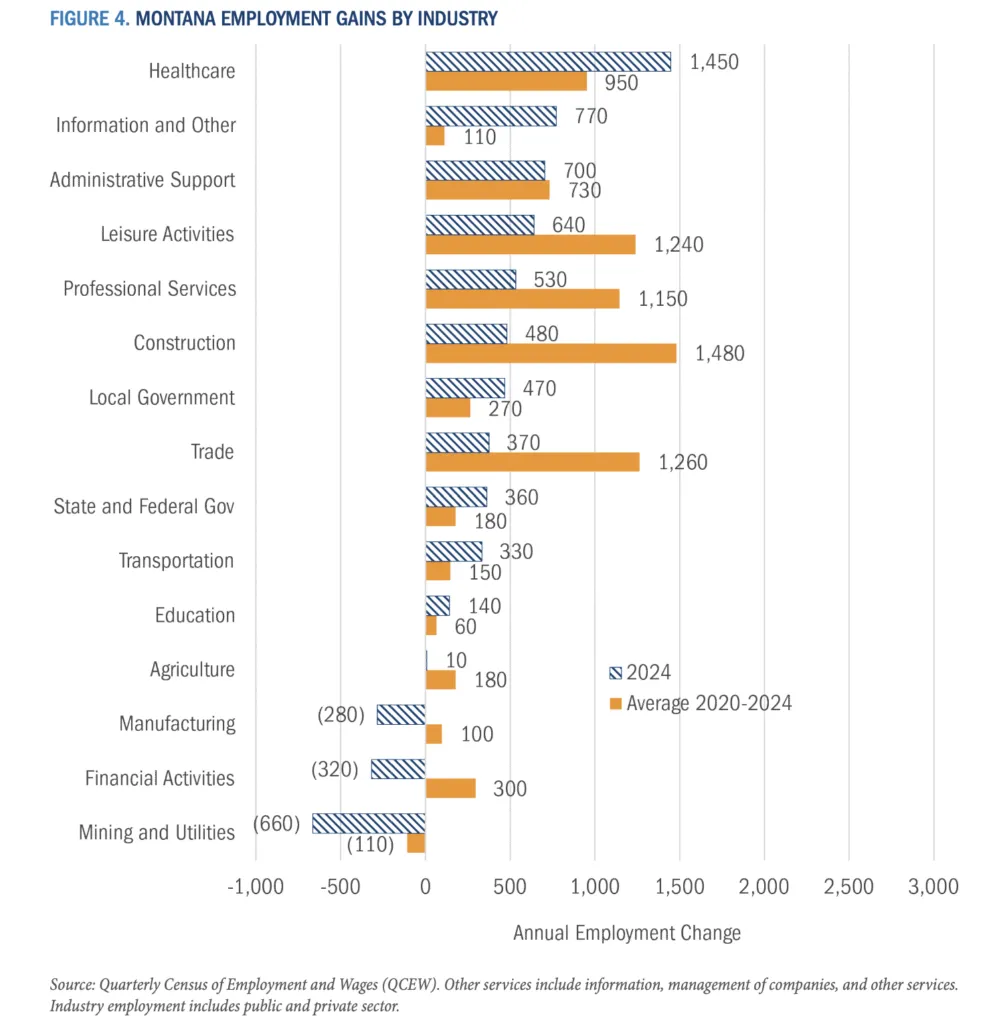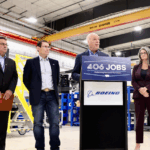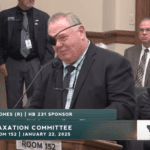Montana’s Labor Paradox: Record Jobs, Missing Workers, and the Crises Behind the Gap
State reaches historic employment levels while facing severe worker shortages as housing costs, industry shifts, and workforce barriers keep qualified workers on the sidelines
By Staff Writer
Sep 3, 2025
HELENA — Montana’s economy presents a puzzling contradiction: the state has achieved record employment levels with over 560,000 people working, yet businesses face severe worker shortages with nearly two job openings for every unemployed person.
The paradox deepens when considering that more than 100,000 working-age Montanans have left the workforce entirely, creating a situation where the state simultaneously celebrates historic job growth while struggling to fill positions across multiple industries.
Montana’s 2025 Labor Day Report, released by the Department of Labor and Industry, reveals a complex economic landscape where rapid growth has created new challenges that keep qualified workers on the sidelines despite abundant opportunities.
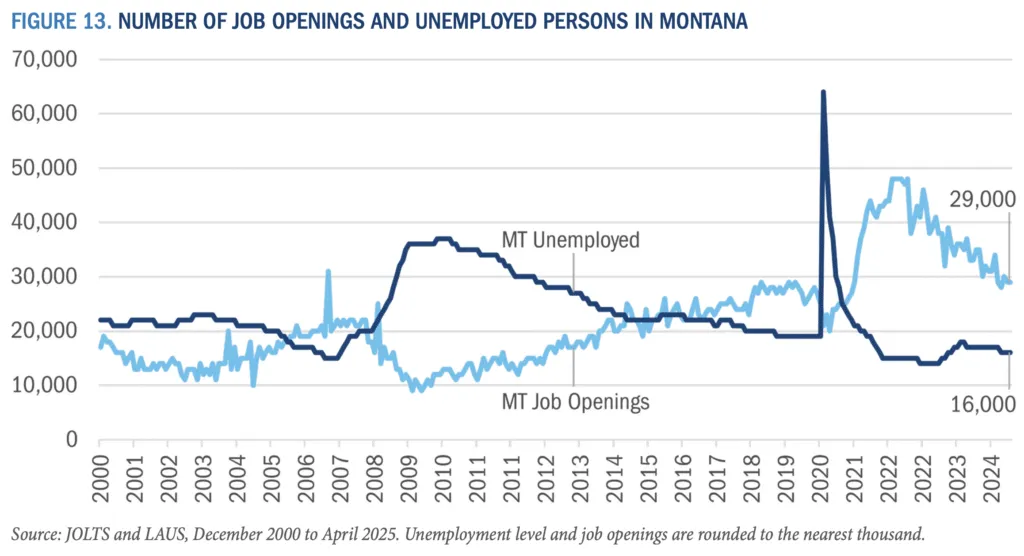
Housing Crisis Limits Worker Mobility
The most significant barrier to workforce participation stems from Montana’s housing affordability crisis. The typical home value averaged $467,000 in the first half of 2025, representing a 65% increase since 2020.
“Montana is one of 25 states in the nation where a family with the median income does not earn enough income to qualify for a mortgage on a median-priced home,” according to the Labor Day Report.
Housing costs continue to rise faster than wages, creating a situation where workers cannot afford to live near available jobs. This geographic mismatch particularly affects sectors like construction and hospitality, which often require workers to live in expensive resort communities or rapidly growing areas.
The state’s average mortgage rate for existing homeowners is 4.1%, nearly three percentage points lower than current 30-year fixed rates, leaving many reluctant to move and further constraining the housing market.
Industry Upheaval Creates Displacement
Montana’s economy is experiencing significant industry volatility that contributes to workforce displacement even amid overall growth. The most dramatic example occurred in September 2024 when Sibanye-Stillwater Mining Company announced plans to lay off approximately 40% of its Montana workforce — roughly 700 workers earning average annual salaries exceeding $110,000. The layoffs resulted from Russian market manipulation that flooded the U.S. market with underpriced palladium, causing prices to collapse by more than half under the previous federal administration.
“While we have struggled through some difficult layoffs and closures, Montana still offers tremendous opportunity in critical sectors, such as skilled trades, health care, and technology,” said Labor Commissioner Sarah Swanson.
Montana’s entire congressional delegation is now pushing President Trump’s administration to impose a 50% tariff on Russian palladium imports to help restore the Stillwater jobs. The delegation argues the mines are “the only primary producer of platinum and palladium in the United States” and provided “over a thousand high paying jobs” before the layoffs.
Meanwhile, other sectors are booming. Construction employment surged by 2,200 jobs over the past three months, with 500 positions added in July alone, according to the state’s most recent economic data. Trade, transportation, and utilities added 800 jobs over the same three-month period.
The broader economy shows signs of entrepreneurial dynamism despite workforce challenges. Montana ranks third nationally for self-employment, with 29.3% of the workforce operating their own businesses. The state recorded 4,800 new businesses in 2024 — near record highs — while business applications reached an all-time high.
This creates a broader skills mismatch where workers displaced across multiple industries — from mining to manufacturing to government — may not easily transition to booming sectors like construction, contributing to the apparent contradiction of job shortages amid workforce displacement across the economy.
Government employment declined by 1,300 jobs over three months, while manufacturing continues struggling with the closure of lumber mills earlier in the year.
Workforce Participation Barriers
For parents who want to work, childcare shortages present a significant obstacle to workforce participation. Licensed childcare capacity meets only 46% of estimated demand statewide, with 52% of counties classified as childcare deserts where supply meets less than one-third of need.
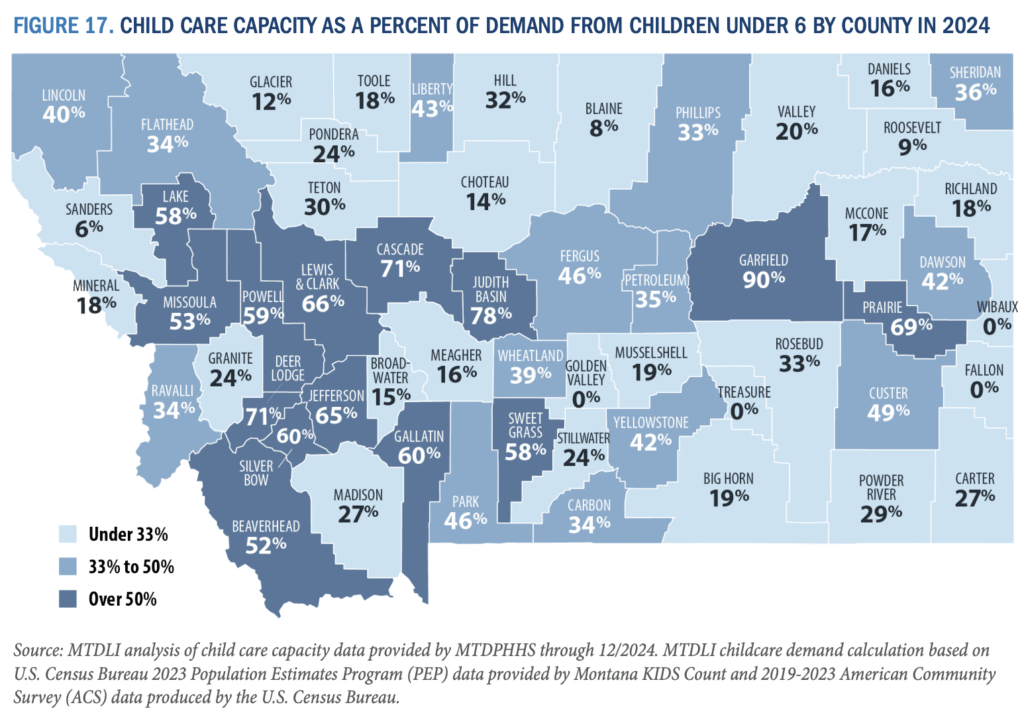
This shortage prevents approximately 23,200 Montana parents from participating in the labor force, while an additional 39,700 parents report working reduced hours due to childcare constraints — affecting about 7% of the state’s total labor force.
The problem reflects broader infrastructure challenges that keep willing workers from fully engaging in the economy, despite record job availability.
Skills and Geographic Mismatches
Montana’s labor force actually declined by 305 workers over the past three months, even as employers added 2,700 payroll positions during the same period. This divergence suggests that available jobs may not match the skills or locations of available workers.
The state ranks third nationally for fastest wage growth since 2020, with real wages growing 2.3% annually. The average wage for Montana workers surpassed $60,000 in 2024. Professional service workers saw the fastest wage growth of 4.8% in 2024, with average wages reaching $102,000 — making it the second-highest paying industry after natural resources.
Yet these wage gains haven’t been sufficient to overcome the structural barriers keeping workers from participating in the economy. Adding to the complexity, approximately 21% of Montana’s workforce are employed in occupations highly exposed to artificial intelligence, including office and administrative support, business and finance, legal, architecture, and engineering roles that may require significant reskilling as technology advances.
Policy Response: The 406 JOBS Initiative
Governor Greg Gianforte launched the 406 JOBS initiative in August 2025, designed to modernize Montana’s workforce system and bring the 100,000-plus working-age adults who have left the workforce back into employment. The scale of the challenge is significant: nearly 340,000 Montanans are out of the labor force entirely, with most over age 55 and retired, but the initiative targets the substantial portion of working-age adults who represent untapped economic potential.
“This is the moment to reconnect workers in our state to meaningful employment and prosperity,” Swanson said. “406 JOBS will mobilize our state workforce system with an urgency for reform that is unprecedented in our state.”
“406 JOBS will work across the public and private sector to promote career, college, military, and entrepreneurship pathways for Montanans to strengthen our workforce and prepare the next generation,” Gianforte said when launching the initiative. “We’re following President Trump’s lead to Make America Skilled Again and opening the door to greater opportunities for all Montanans to reach their full, outstanding potential.”
The initiative focuses on six high-demand sectors: healthcare, education and childcare, construction, hospitality, financial and professional services, and advanced manufacturing and computing. Together, these industries account for 53% of Montana’s GDP and 98% of projected job openings.
Montana Department of Labor and Industry has already worked with over 380 workers affected by the Stillwater layoffs, providing job transition services, skills training, and apprenticeship opportunities through federal dislocated worker funds.
Regional Disparities Complicate Picture
The workforce challenges vary significantly across Montana’s regions. The South Central region, which includes the Stillwater mine area, experienced the most significant job losses in 2024, with mining declines offsetting growth in healthcare, retail trade, and transportation.
Western Montana regions saw the strongest growth, with the Southwest region adding nearly 1,700 jobs and the Northwest region adding 1,540 jobs in 2024. However, these are also the areas with the most severe housing affordability challenges.
Montana’s seven Indian reservations face distinct workforce participation challenges, with unemployment rates ranging from 2.7% to 8.7% compared to the statewide average of 2.8%. Each reservation economy reflects unique local conditions — the Blackfeet reservation benefits from Glacier National Park tourism, while the Crow and Northern Cheyenne economies fluctuate with energy market changes due to coal mining revenues. Most reservation areas reported stable or slight employment declines in 2024, with only the Northern Cheyenne reservation adding jobs.
“Montana’s industrious workforce continues to power a strong, resilient economy across the state,” Swanson said, acknowledging both the achievements and ongoing challenges facing the state’s labor market.
The contradiction of record employment amid severe worker shortages reflects Montana’s broader economic transformation — rapid growth that has outpaced the infrastructure and systems needed to support a fully engaged workforce. Resolving this paradox will require addressing housing affordability, workforce development, and the complex transitions between declining and growing industries.
Categories: Business, Government, Housing, Technology
Don’t miss the week’s top Montana stories
Join readers across Montana who rely on WMN for independent reporting.
Unsubscribe anytime. Want to support WMN? Upgrade for $4/month →


